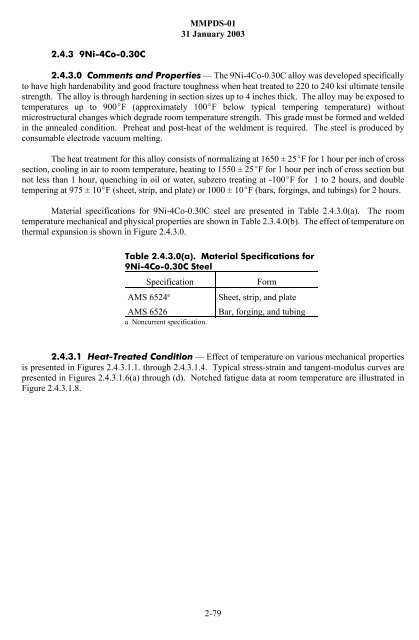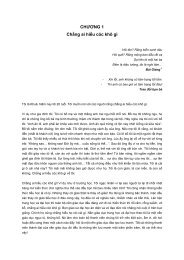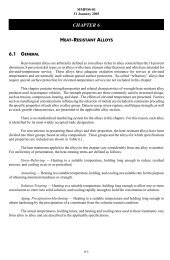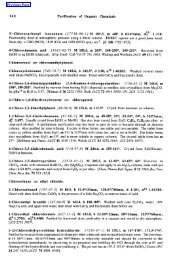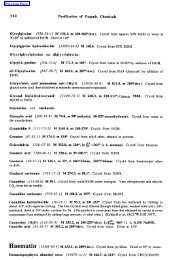steel - Nouvelle page 1 - Free
steel - Nouvelle page 1 - Free
steel - Nouvelle page 1 - Free
Create successful ePaper yourself
Turn your PDF publications into a flip-book with our unique Google optimized e-Paper software.
MMPDS-01<br />
31 January 2003<br />
2.4.3 9Ni-4Co-0.30C<br />
2.4.3.0 Comments and Properties — The 9Ni-4Co-0.30C alloy was developed specifically<br />
to have high hardenability and good fracture toughness when heat treated to 220 to 240 ksi ultimate tensile<br />
strength. The alloy is through hardening in section sizes up to 4 inches thick. The alloy may be exposed to<br />
temperatures up to 900EF (approximately 100EF below typical tempering temperature) without<br />
microstructural changes which degrade room temperature strength. This grade must be formed and welded<br />
in the annealed condition. Preheat and post-heat of the weldment is required. The <strong>steel</strong> is produced by<br />
consumable electrode vacuum melting.<br />
The heat treatment for this alloy consists of normalizing at 1650 ± 25EF for 1 hour per inch of cross<br />
section, cooling in air to room temperature, heating to 1550 ± 25EF for 1 hour per inch of cross section but<br />
not less than 1 hour, quenching in oil or water, subzero treating at -100EF for 1 to 2 hours, and double<br />
tempering at 975 ± 10EF (sheet, strip, and plate) or 1000 ± 10EF (bars, forgings, and tubings) for 2 hours.<br />
Material specifications for 9Ni-4Co-0.30C <strong>steel</strong> are presented in Table 2.4.3.0(a). The room<br />
temperature mechanical and physical properties are shown in Table 2.3.4.0(b). The effect of temperature on<br />
thermal expansion is shown in Figure 2.4.3.0.<br />
Table 2.4.3.0(a). Material Specifications for<br />
9Ni-4Co-0.30C Steel<br />
Specification<br />
AMS 6524 a<br />
AMS 6526<br />
a Noncurrent specification.<br />
Form<br />
Sheet, strip, and plate<br />
Bar, forging, and tubing<br />
2.4.3.1 Heat-Treated Condition — Effect of temperature on various mechanical properties<br />
is presented in Figures 2.4.3.1.1. through 2.4.3.1.4. Typical stress-strain and tangent-modulus curves are<br />
presented in Figures 2.4.3.1.6(a) through (d). Notched fatigue data at room temperature are illustrated in<br />
Figure 2.4.3.1.8.<br />
2-79


